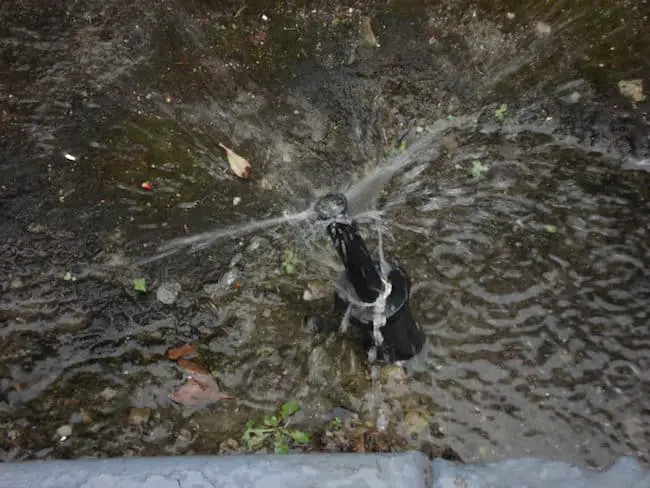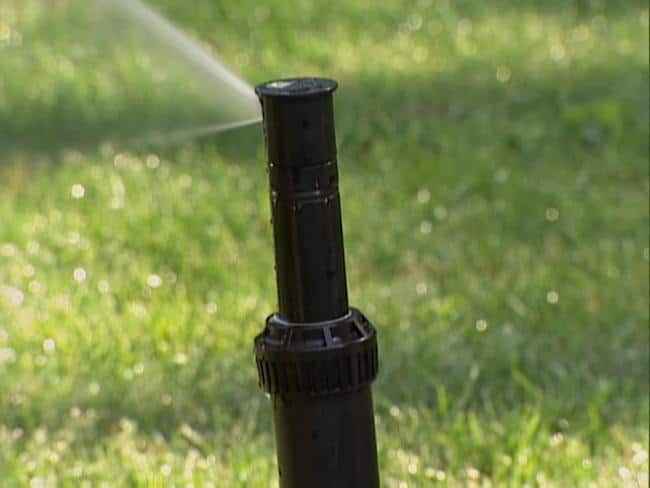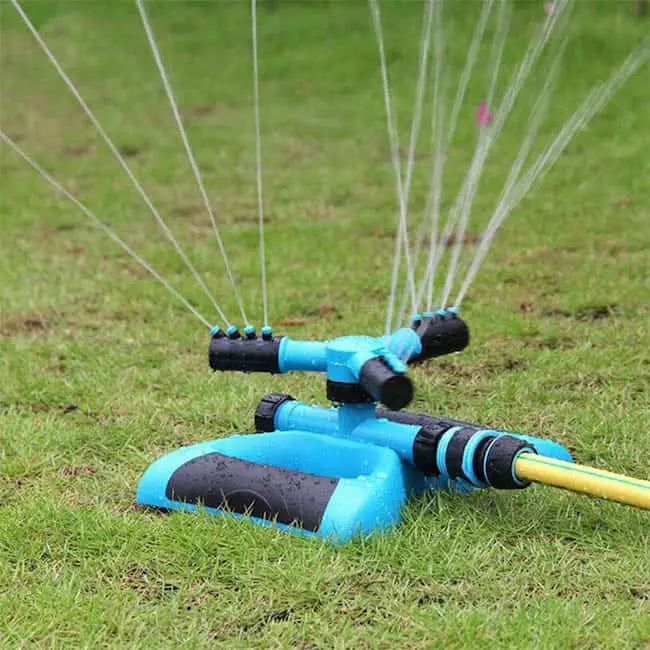Practical Ways on How To Fix Sprinkler System Efficiently

Troubleshooting sprinkler systems is not that complicated. If you learn some practical ways on how to fix a broken sprinkler system, you can save money from having to purchase a new one. Remember that sprinklers are some of the most useful tools in your garden. They help to ensure that the plants in your garden stay in the best shape possible. Here’s what you need to know about sprinkler systems along with tips on how to fix them when they get broken.
[toc]
How Lawn Sprinkler System Works?
Lawn and garden sprinklers are becoming more and more popular these days. They are usually common in residences with a garden or lawn. There are different types of sprinkler systems, although the manner they work is almost the same. Before carrying out any type of sprinkler repair, it’s a good idea to learn how sprinklers work.
The lawn sprinkler system works by means of a pressure system. When the water goes into the pipe, the pressure will push them towards the ground. And when the pressure stops, the water retracts back down into the ground.
10 Common Sprinkler Problems and How to Fix Them
Below are some of the most common problems you’ll encounter with your sprinkler, including tips on how to go about troubleshooting sprinkler systems.
1. Clogged Sprinkler Heads

Image Credit: Visit Rogers Gardens
A clogged sprinkler head is one of the most common problems that you will ever have to deal with your sprinkler system. If the head is not rising or the water is not consistently flowing, then it may be because the sprinkler head is clogged.
To fix the sprinkler system with clogged heads, begin by digging the clogged head and taking it out of the riser. Pull it apart and lift it out of the canister. Remove the filter screen and rinse it with water to remove the stuck dirt or debris that’s causing the clog. After cleaning, put the parts back together and install it back to the riser.
2. Incorrect Head Height

Image Credit: DIY Network
If the height of the sprinkler head is incorrect, your garden or lawn won’t receive enough water coverage. So if you notice that the health of your plants is inconsistent, then the head height is one of the first things you should check.
Troubleshooting sprinkler heads with incorrect height is easy. First, dig the soil surrounding the crooked sprinkler head. Remove enough soil so you can get access to the base of the riser that supports the head. Once you have access to it, straighten the head. Use a bubble level to ensure that the sprinkler is vertically leveled. Pour a small amount of gravel around the riser’s base to secure the riser and sprinkler. Continue adding the soil, while adjusting the sprinkler when necessary.
3. Poor Water Pressure

Image Credit: Landscaping By Chuck
If the sprinkler is not shooting out enough water, then it may be due to poor water pressure. There are many reasons for this. It may be because of a problem with your city’s water supply. If this is the case, then you have to wait until the water supply in your area is fixed.
Another reason for low water pressure is that the backflow valves may not be opened fully. To fix this, simply locate the backflow device and open both valves until they are in parallel with the pipes of the backflow device.
4. Pump Buzzing

Image Credit: Backyard Boss
One of the most common sprinkler problems is a noisy pump. The buzzing sound in the sprinkler pump could mean that there is not enough water to move, and the pump may be running dry. But if this is not the case, then it may be because of worn bearings. All you need to do is to replace the bearings. If the problem is due to a damaged pump motor, then you need to replace the motor.
5. Skipping Irrigation Zones

Image Credit: Hills Borough Irrigation
There are many possible reasons why the sprinkler system is skipping over the watering zones. But, it’s usually because the pump is located a few feet away from the water source. To fix this issue, simply move the indexing valve closer to the water source. That way, the pump will be near the indexing valve to pressurize the water supply line.
6. Pop Up Failure

Image Credit: Denver Post
Failure to pop-up isn’t always due to the sprinkler itself. Even if the sprinkler’s nozzle is clogged, the water pressure can still push it up. So if it is completely shut, but water still goes out from around it, then the problem may have to do with low water pressure.
Fixing a sprinkler system that will not pop out will require checking for leaks somewhere in the waterline. You also need to check the control valve or if the riser is broken. But sometimes, the problem may only be due to a poor water supply in your area.
7. Water is Leaking

Image Credit: Tristate Waterworks
There are two main reasons behind a water leak in the sprinkler system. The most common is known as “low head drainage”. This problem occurs if the lowest head in the water zone will allow water to drain from the lateral piping, out of the sprinkler. The solution is to install check valves on sprinklers and lateral lines.
Another possible reason behind the leak is because water is leaking through the zone valve, which is usually because of some debris that obstructs the valve’s diaphragm. Remove the debris, and this problem will be fixed.
8. Broken Spray Heads

Image Credit: Menards
If the sprinkler head is broken, there’s no need to dig up the entire lawn. You just need to dig through the small area that surrounds the broken head. Then cut the existing hose to remove the broken sprinkler head.
After removing the broken head, it’s time to install the new head. Attach the new sprinkler head into the pipe section using a male coupler. Make sure that the new head is set at the same height as the previous head. After you attach the new head, apply pipe glue, and hold for a few seconds to give the glue some time to set.
9. Controller Stops Working

Image Credit: Alibaba
There are many reasons why a controller will suddenly stop working. If it shows a blank display, you can try to reset this by pressing the reset slot. Wait until the display would indicate that the controller is back on.
Another common reason why a controller will stop working is because of valve failure. The best thing you can do is to twist the controller dial to the desired valve. If its runtime is blank, just press the up and down button to set it to a duration time. But if you notice that the alarm light goes off and an error message is showing on the display, this may have something to do with a valve solenoid issue, and this will require replacing the connecting irrigation wire.
10. Broken Pump Bearings

Image Credit: Liansheng Pump
If you hear strange noises when the sprinkler pump starts working, this may have something to do with a worn-out bearing. A clicking or squeaking sound from the bearing is a warning sign that they are already worn out or will eventually get broken.
To replace the broken bearing, you may have to disassemble the pump housing. Refer to the user manual for the steps on how to replace the pump bearings.
FAQs
Q1: How to Adjust Sprinkler Heads Spray Pattern?
A1: The process of adjusting the spray pattern will depend on the type of sprinkler that you have. For a pop-sprinkler, locate the marker that’s at the edge of the nozzle where you’ll find a series of angle markings. Hold the shank in one hand then rotate the nozzle until the mark is set at a correct angle. Then turn the entire shank until the zero point is lined to the right side of the spray area, and then leave the sprinkler to fall back into the ground.
Q2: What Causes Sprinkler Heads to Break?
A2: There are various reasons why a sprinkler head will get broken. Sometimes, it’s due to too much water pressure. Because of too much pressure, the head could get blown off. Another reason is frost heave or other winter-related freezing problems. Sometimes, the head will be broken if a child or pet ends up kicking it.
Q3: How to Adjust Sprinkler Valves?
A3: First, locate which sprinkler valves need adjusting. If you need to adjust the sprinkler valves to a low setting, turn the knob that’s above the valve. Turn it to the right direction to close the valve and lower its setting. If the valve still needs adjusting, open it again, and close the valve a few more times.
Q4: How to Replace a Sprinkler Head Nozzle?
A4: To replace a sprinkler head nozzle, begin by unscrewing the faulty sprinkler head from the riser. Next, wrap a length of thread seal tape into the male end of the riser. Then screw the new sprinkler head. Position the female end of the sprinkler head over the male head end then twist to the right to install. Continue twisting until the head nozzle is tightened, which means it’s already secure.
Q5: How do I know if my Sprinkler Solenoid is Bad?
A5: When a sprinkler starts working, the solenoid will change the water pressure inside the sprinkler chamber. Then it lifts the plunger, which opens up the valve. If the solenoid is bad, the water pressure of the sprinkler chamber will not change, and the valve will not open up.
Final Thoughts
Hopefully, you have learned some tips about troubleshooting sprinkler systems. So the next time your sprinkler system is acting up, you no longer have to panic because you’ve already learned the basics.
But if your sprinkler system is still not working after attempting to fix it, you better let the professionals handle it. The problem might just get even worse if you force yourself to troubleshoot it.
